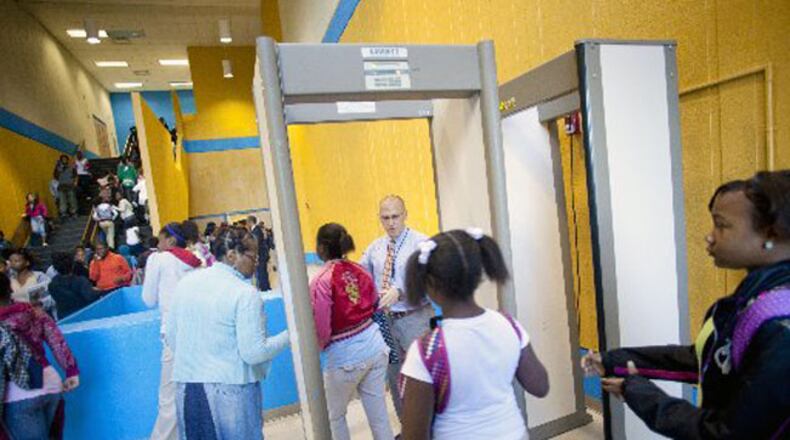The AJC’s Get Schooled Blog is publishing a series of guest columns this week focusing on school safety in Georgia and nationwide. This is the fourth of these columns. The first piece can be found here, the second here, and the third here.
In a guest column, Nancy Duchesneau of the Education Trust says metal detectors and increased security don’t make students safer in school. Relationships are what create safe and welcoming schools.
A senior research associate, Duchesneau leads the social, emotional and academic development work at the Washington-based nonprofit committed to closing the achievement gap between white and minority students.
By Nancy Duchesneau
Even as the nation still reels from the tragedy at Robb Elementary School in Uvalde, Texas, in May, gun violence continues to increase. The horror of gun violence seems to be a never-ending cycle. America’s children deserve solutions, not just thoughts and prayers.
As schools returned to in-person learning this fall, school safety is a top concern for students, parents, teachers and school leaders alike. But policymakers tend to focus on a singular approach: that increased security leads to student well-being and safety. But the evidence says otherwise.
The knee-jerk reaction to violence is typically for policymakers and politicians to call for “hardening” school facilities (i.e., increasing security measures through increases in police and surveillance) in an effort to convince the public that public institutions are safe. That means more police. More metal detectors. More security cameras.
Credit: Contributed
Credit: Contributed
However, efforts to harden schools have proven to be ineffective in increasing school safety. Research shows that school hardening doesn’t make students safer and, in fact, has been linked to negative effects on school climate and academic outcomes. So, while many policymakers and districts leaders tout their tightened security measures, the truth is that they’re often just for show rather than real impact. More concerning, these harmful practices are disproportionately used in communities that have high proportions of students of color and students from low-income backgrounds.
A second, more evidence-based approach to reducing violence is to invest in student mental health and well-being. Studies show that the COVID-19 pandemic has had frightening effects on students’ mental health, with increases in self-injury and suicide at record rates. To support students’ mental health, many experts and school and district leaders are calling for increasing the number of school counselors and psychologists, social and emotional supports, and restorative and relationship-building practices. But not only are these supports linked to better student mental health — they are also shown to create safer learning environments for students and improve student academic outcomes. If the public cares about school safety, these supports are non-negotiable.
Thanks to the American Rescue Plan, the Bipartisan Safer Communities Act, and other federal efforts, school districts have been allotted an unprecedented amount of federal funding to use for supporting school security and student well-being. The evidence says that more school counselors is more effective than more school resource officers. So why not try the better return on investment?
The solution may not be flashy, but it’s clear: We need to create positive, inclusive learning environments where students feel they belong, have strong relationships, and where their mental health is a priority. While these practices may not be as easy to point to as a metal detector or a police officer at the door of a school building, these evidence-based measures that support student mental health and well-being will create the true impact that students need in schools.
About the Author
The Latest
Featured



